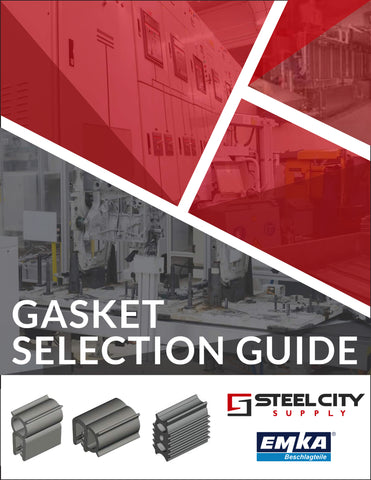5 Rubber Materials to Consider When Choosing a Gasket For Your Design
The flexibility, durability, and sealing capabilities of rubber make it a popular option for gaskets. Rubber (both natural and synthetic) possesses properties that allow it to resist damage caused by heat, weather, friction, and even harsh materials such as oil or gasoline. All rubbers are not created the same, however, and choosing the wrong one to seal your design can cause serious damage.
Choosing the right rubber material for your design depends on multiple factors, including its exposure to:
- Heat
- Oil
- Fuel
- Moisture
- Sunlight
- Physical force
While there are many different types of rubbers used in gasketing, these five are some of the most common among designers:
NATURAL RUBBER
With the best recoil elasticity of all the rubber materials, natural rubber (NR) is an ideal choice when flexibility is high-priority. Unsurprisingly, this characteristic also makes it far less susceptible to long-term damage, abrasion, and deformation in comparison to other rubber variants. That elasticity, however, comes with a compromise: natural rubber offers less oil, fuel, and solvent resistance than its fellow rubber materials.
STYROL BUTADIEN RUBBER (BUNA)
Abbreviated as SBR, this popular synthetic rubber is designed to be an improved version of natural rubber. As such, it shares many qualities with its natural counterpart (including elasticity and durability) and has become prevalent in the automobile industry. Also like natural rubber, Buna works particularly well as a gasket when required to adhere to metals and textiles.
NITRIL RUBBER (PERBUNAN)
Nitril rubber (NBR) is a synthetic material specially designed to withstand oil and fuel, making it a common material for petrol hoses. When used for gaskets, it offers less elasticity than Buna or natural rubber, but it can withstand higher temperatures than less specialized rubbers. Perbunan gaskets are effective options for designs in high-heat environments that need to withstand or contain oil.
CHLOROPRENE RUBBER (NEOPRENE)
Designs required to withstand outdoor elements often benefit from chloroprene rubber (CR). This material’s high resistance to a variety of substances that may permeate other types of rubber make it a versatile option for enclosures that are likely to be exposed to moisture, sunlight, and oil.
ETHYLENE PROPYLENE DIEN RUBBER
EPDM, as it’s commonly called, is one of the most heavy-duty rubber gasketing materials and is often used in vehicles and buildings. Not only is it resistant to high temperatures, but it also provides good ozone resistance, making it ideal for sunlight and outdoor exposure. However, it isn’t suitable for all uses; perbunan and neoprene are better options for enclosures likely to come in contact with oil.
FLEXIBLE OPTIONS FOR DURABLE DESIGNS
Choosing the right rubber for your enclosure can help it retain its effectiveness and functionality for years to come. With plenty of rubber options available, there’s sure to be one that fits your design’s needs, allowing it to provide a safe, efficient seal for the contents within.
To learn more about the various types of gaskets and their uses, check out the document below and contact us for more information.

